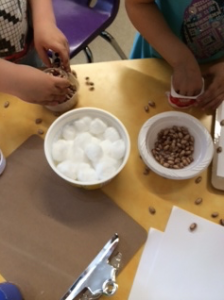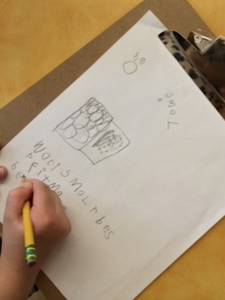My Favourite Digital Tools
In my last post I mentioned that as a millennial I am quick to adopt any tool regardless of whether it meets any personal or educational outcomes. I am the one who searches for ‘lifehacks’. Most of these tools, apps, and technologies come and go, but some remain useful to me everyday. Here is a list that I have found helpful. In some cases, the connection to education may be a bit loose, but in making my life easier/more organized/flow better, these tools help me focus on my most important instructional goals.
Evernote
Evernote, a cloud-based note-taking application, is where I store EVERYTHING from my life. It flexibly works with different formats and filetypes, and it synchronizes across platforms. In it I store resources, assessments, sheet music, music files, business cards, presentations, media and lesson plans. You can search for notes by any contained text, and email documents to the program using an Evernote-specific email address (E.g. joshwinestock.9471942@m.evernote.com).
A few ways it has helped me teach:
-Until it’s time to print and distribute, all of my resources are paperless.
-I can play media files straight from the application (including those I needed throughout the winter concert).
-It stores my report card comment bank.
-All of my blog subscriptions (including My ITLL Blog) are sent to my evernote email address, keeping my real inbox clear.
– For our drama performance THIS week, a colleague of mine created a note where she placed music files throughout the script so she could easily read the script and launch the music at the same time.
I recommend partnering Evernote with Scannable – a high quality scanner for your phone.
Followupthen (Followupthen.com)
Followupthen is an email reminder program that lets you send reminder emails to yourself or someone else at specified times. Sending an email to the addressthursday@followupthen.com will bring the email back to you on Thursday. Everyweekday7am@followupthen.com will bring a recurring email back to you at 7am every workday.
How I used this application: Our school sends out a weekly bulletin for staff called Monday morning jazz. The optimal time for me to read it is every morning at 8:45am. I don’t want to print it or leave it in inbox where I will forget it, so I send it to the email address everyweekday845am@followupthen.com.
Microsoft Sway (Sway.com)
I was introduced to this presentation application when the WSD sent out an email newsletter using it in September or October. Sway is a highly intuitive online presentation application (similar to Prezi). Teachers can create lesson plans online for students to access at home. Students can create presentations at home and link them to their teachers. In addition to lesson plans, I use Sway to hold all of my choir lyrics (http://bit.ly/1rmfWyy)
Planboard (Planboardapp.com)
I haven’t been using this application much in the past school year. This application, created by chalk.com, is an online planning notebook. You can include links and media throughout your lesson plan. Chalk also hosts Markboard, a site to record classroom assessments.
Other applications I find helpful:
1. Say it Mail it (iPhone) – take audio notes and immediately mail it to yourself or (bonus points) to your Evernote account.
2. The Email game (online) – quickly move through email.
3. Workflow (iphone/ipad) – Create apps within this app.
4. WolframAlpha (everywhere)- Find and compare anything quantifiable on the internet.
5. Substitute Alert (iPhone)- Notifications to your phone for Aesop jobs (for all the substitute teachers out there).
6. Duolingo (everywhere)- Language learning app.
7. Dropbox (everywhere) – Filesharing
8. Figure by Propellerhead (iPhone/Ipad) – Music fun!
9. Quick Graph – my favourite graphing app
Josh Winestock
Music/Math Support
Tyndall Park School


